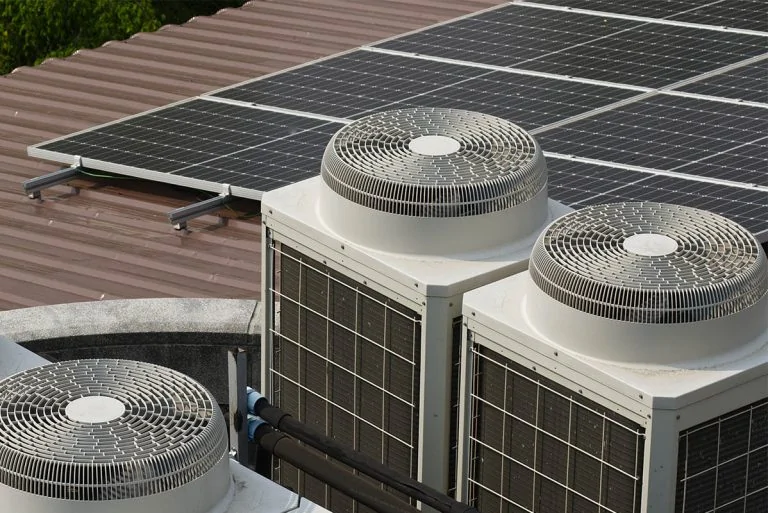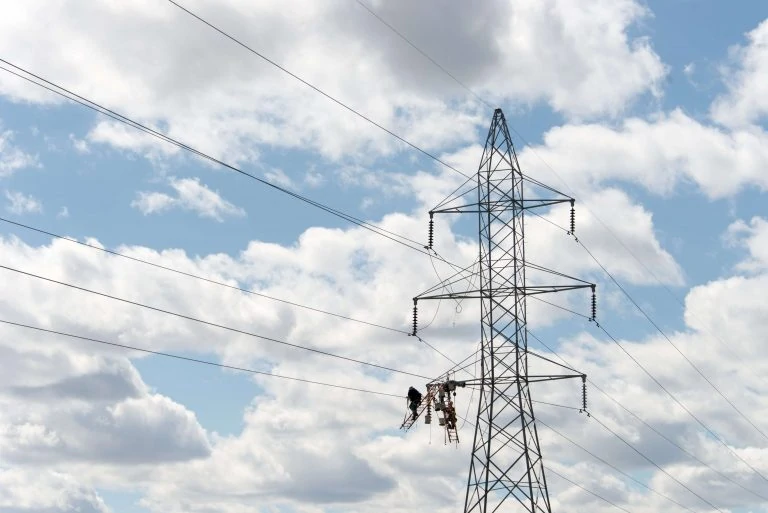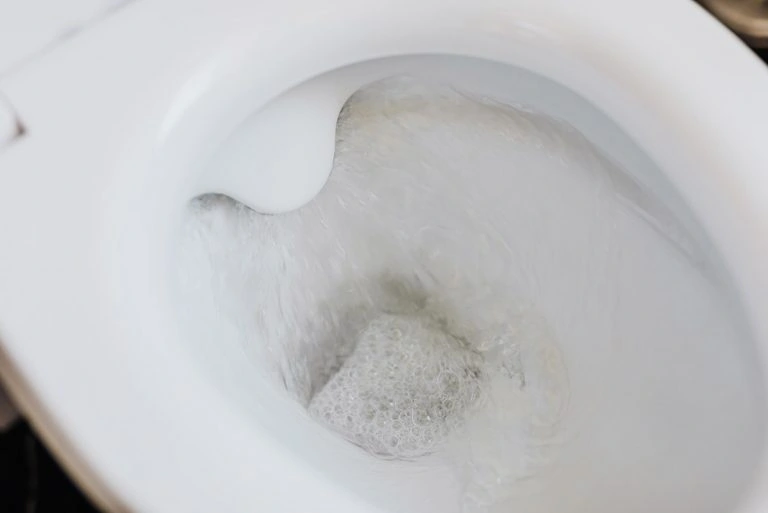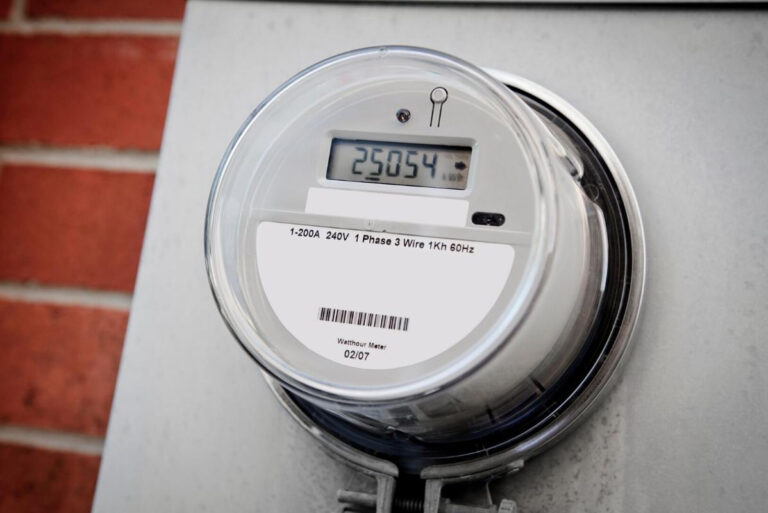Why should you care about solar panel efficiency if sunlight is free? The short answer to this question comes down to dollars and space.
The efficiency of your solar panels is important in two scenarios:
- The more efficient the panels are, the fewer you need to meet all or most of your home’s energy demand. This often means higher upfront cost, but greater energy savings down the line.
- If your roof is small and you have little space for a ground mount solar array, then fewer, more efficient panels is what will serve you best.
Here you’ll find the basics on solar panel efficiency and a list of the most efficient solar panels on the market today.
Looking ahead in the solar world, new materials called perovskites hold great promise in making solar modules even more efficient at capturing sunlight and converting it into usable electricity.
What is solar panel efficiency?
Solar panel efficiency is a metric given as a percentage of the total amount of solar energy (also called irradiance) hitting photovoltaic (PV) cells that is actually converted into usable electricity. Efficiency is a common way to compare the performance of solar panels.
Solar panel manufacturers determine efficiency (E) by comparing the maximum power output (Pou ) of their product to the power input from the sun (Pin ) under standard test conditions (STC).
STC is the solar industry standard defined as:
- The solar cell temperature (not the temperature of the air around it) is 25℃ (77℉).
- The sun’s irradiance — or the input power — is assumed to be 1,000 W/m2. (Note: Power is measured in watts, represented as W.)
- The mass of the air (that is, the thickness of the atmosphere around the solar cell) is 1.5 noted as AM1.5.
- No wind.
The power ratio multiplied by 100 gives a percentage called the efficiency. Expressed as an equation:
E = (Pou / Pin ) x 100
As an example:
Your 300W solar panel measures 1 m2. So the input power (Pin) is the sun’s irradiance multiplied by the panel’s area: 1,000 W/m2 x 1 m2 = 1,000 W.
E = (300 W / 1000 W) x 100 = 0.3 x 100 = 30%
How efficient can solar panels be?
In a perfect world, every homeowner’s dream would be to achieve 100% efficiency of every panel in their solar array all the time.
Unfortunately, this is a scientific impossibility.
Researchers proved that the physical limitations of silicon, (chemical symbol Si), as traditionally arranged in first-generation solar cells, dictate a maximum theoretical possibility of approximately 33%.
Although it may seem small, it’s actually high compared to other materials.
What happens to all the rest of the sun’s energy that isn’t converted to usable electricity?
Most incoming solar energy, traveling as tiny energy “packets” called photons, is lost as heat or reflected off the PV panels without being absorbed.
Scientists are on a never-ending quest to minimize these losses as well as maximize the efficiency of silicon as a photon-absorbing material. They’re also searching to discover and commercialize other photovoltaic materials with efficiencies above 33%.
Solar panel efficiency in the 70s
Remember the 32 solar panels former President Jimmy Carter installed on the White House roof in 1979? They were thermal solar panels responsible for heating water, like in the pool.
At the time, efficiency in photovoltaic solar cells was about 14%.
Solar panel efficiency in 2021
In 2021, at the time of this writing, the highest-performing PV panels on the market for residential use clock in at 22.8% efficiency.
Here are the top three solar modules in terms of efficiency in 2021 that you can purchase for your home:
| Company | Panel Model | Efficiency | Power |
|---|---|---|---|
| SunPower | A-Series SPR-A425-G-AC | 22.8% | 425 W |
| LG Solar | NeON R Ace LG380Q1C-V5 | 22.0% | 380 W |
| REC Solar | Alpha Series 380AA | 21.7% | 380 W |
What factors affect solar panel efficiency?
In real world conditions, solar panels usually do not perform as measured at STC. Major reasons why efficiency drops off include:
- Photovoltaic materials. What the solar cells are made of is the major determinant of efficiency.
- High temperature. For each degree above 25℃, up to 0.5% efficiency is lost.
- Reflection. Approximately 30% of sunlight doesn’t even make it into your solar cells.
- Shading. Trees or buildings can make it seem like nighttime to your panels.
- Poor orientation. South-facing panels are the most efficient (all other conditions being equal).
- Inappropriate angle. The pitch of your roof may not allow direct contact between the sun’s rays and your panels.
- Cable thickness. Voltage drops that reduce efficiency result from thick, long wiring located between the panels and the inverter.
- Inverter efficiency. When converting sun-generated direct current electricity to the alternating current needed by household appliances, there is efficiency loss.
- Dirt or dust on the surface. Wind blows pollen, leaf matter, insects, and other unwanted objects on to your solar array.
Which types of panels are most efficient?
The most efficient solar cells that exist today only in a lab setting achieve an efficiency of close to 50%. They are a decade or more away from commercialization – if ever.
For homeowners, the most efficient solar cells arranged in panels available for purchase today come in at 22-23% efficiency, tops. These panels rely on traditional PV technology using semiconductor materials where there is just a single p-n junction.
What is a semiconductor in a solar cell?
To convert solar energy into usable electricity, solar cells take advantage of the semiconductive qualities of silicon, noted Si. As a semiconductor, silicon is neither an insulator, like glass, or a conductor, like copper, but falls in the middle.
Since it is an inexpensive and abundant chemical element, silicon is the most common mineral used in photovoltaics today.
Silicon isn’t a ready conductor of electricity like copper, which moves electric current through electron-to-electron transmission, but it can be made to do so when other elements are added to it in a certain fashion through a process called doping.
After silicon is treated in this way, it becomes an excellent electricity conductor, earning the name semiconductor.

What is a p-n junction in a solar cell?
A p-n junction is the boundary between two differently doped layers of silicon in a photovoltaic (PV) cell. When certain wavelengths of sunlight hit it, the light energy causes the movement of free electrons in the p-n junction.
That movement sets up an electrical field in the p-n junction. This means there is a build up of negative charges on one side and positive charges on the other side. In this field, energized electrons move in a unidirectional fashion. When the layers are connected by a metallic wire leading into your home, the direct current can be used to supply your home with electricity.
What is the difference between P-type and N-type solar cells?
One layer in a p-n junction contains an element with more electrons than silicon needs for correct bonding, often phosphorus. This layer is called the N-type layer because of the added electrons carrying a negative charge.
The other layer in a p-n junction was doped with an element, usually boron, containing fewer electrons than silicon needs for proper bonding. This electron deficit gives the layer a positive charge, and is called the P-type layer.
All solar cells contain at least one p-n junction. However, a big difference between them is that some PV cells begin with a thick boron-doped layer of silicon as the base with a thin layer of phosphorus-doped silicon next to it. This type of solar cell is called P-type.
Other solar cells begin with a base of a thick layer of phosphorus-doped silicon and a thin layer of boron-doped silicon next to it. This solar cell is called N-type.
N-type solar cells are more efficient than P-type. In fact, all of the three most efficient panels on the market today, as noted in the table above, are made with N-type solar cells.
First-generation solar cells contain a single p-n junction. These are the ones commercially available today. Companies are currently investigating multi-junction technologies.
Solar panels on the market for homeowners 2024
Homeowners in 2024 have a few choices for solar power that span mostly two generations of solar technology. They vary widely in efficiency and cost.
First-generation solar panels (1950s on)
Almost all first-generation PV panels are made of monocrystalline (mono-Si) or polycrystalline silicon (poly-Si) solar cells. Both types of panels contain rows of solar cells arranged in series, each one capable of producing about 0.5 V.

In a 36-cell panel in which all cells are wired in series, for example, that would add up to 0.5V x 36 = 18 V.
In a complete home solar set-up, there are multiple ways to connect your panels together depending on if you’re interested in achieving greater voltage or higher amperage.
Most panels for residential use have 60 or 72 cells per panel.
As a general rule of thumb, the more cells in a panel, the higher the price.
Today, these first-generation panels are typically covered in glass and set in aluminum frames. There is a thin layer of EVA (ethyl vinyl acetate) on both sides of the solar cells in a panel, encapsulating it. This arrangement protects the cells and circuitry from damage and weather effects.
Monocrystalline (mono-Si)
Mono-Si panels are made from a single crystal of pure silicon produced under very high temperatures for an extended time. It is first formed into bars called ingots, then sliced into wafers. The entire process is very expensive and energy-demanding.
Monocrystalline panels have greater efficiencies than poly-Si panels. They do not lose efficiency as easily as poly-Si when exposed to high temperatures. Due to their superior quality, mono-Si panels are more expensive than poly-Si panels.
Polycrystalline (poly-Si)
Produced from many small silicon fragments that are randomly oriented and melted together, poly-Si panels also appear irregularly arranged.
Poly-Si panels require less energy to produce. The higher concentration of impurities and inferior material quality reduce their efficiency.
Here is a table that points out the major differences between mono-Si and poly-Si full-sized solar panels:
| Metric | Mono-Si | Poly-Si |
|---|---|---|
| Appearance | Black | Bright blue |
| Useful life | 25+ years | Up to 25 years |
| Efficiency | High (20-23%) | Moderate (16-19%) |
| Cost | High ($1-$1.50/watt) | Moderate ($0.70-$1/watt) |
Second-generation solar cells (1970s on)
Compared to standard solar panels made with thick (350 microns) silicon wafers, thin-film solar panels (TFSP) contain multiple layers of various types of PV materials approximately 1 micron thick. (For comparison, a human hair is approximately 75 microns in width.)
The layers may be put on glass, plastic, or metal. Some examples of TFSP include:
- Copper indium gallium diselenide (CIGS)
- Cadmium telluride (CdTe)
- Gallium arsenide (GaAs)
- Amorphous thin-film silicon (a-Si, TF-Si)
All of these thin-film panels are lightweight and flexible. This makes them ideal for large commercial or utility purposes like PV power stations. However, their efficiencies are generally on the low end at 6-10% (although CIGS has achieved a 22.6% efficiency in the lab).

Source: Wikimedia / Fieldsken Ken Fields
Take home message: This means homeowners aiming to meet all or most of their energy demand by TFSP in 2021 will need an extremely large and sunny space on the order of, in fact, 50% more than with conventional silicon panels to generate the same amount of electricity.
The thin-films are not as long-lived as the standard silicon cells, performing up to 14-17 years.
Efficiencies vary among the different types of TFSC. So, too, does their ability to withstand high temperatures. In general, thin-film cells are better at maintaining efficiency performance in very hot weather than conventional solar panels.
Generally, they are less expensive to produce than first-generation solar cells. However, some of the metals (such as cadmium) are very toxic.
Solar cell technologies to increase efficiency
While a variety of solar cells were under development over the years, several technologies designed to boost panel efficiency were also being attempted in the lab. Many of these efficiency enhancements made it to commercial production and are commonly used on first- and second-generation PC cells.
Here are a few major PV technological advances in achieving higher efficiency of converting radiant energy into usable electricity. They may be used together or separately.
1. Passivated emitter rear cell (PERC)
As a thin-film technology developed in the ‘80s, PERC is an add-on technology that aims to improve the efficiency of first-generation solar cells.
There are two layers applied to the back of the crystalline silicon cell in this technology. They enhance the movement of electrons in the cell. They also bounce back light that has passed through the cell the first time onto the surface so that it can be converted to usable electricity.
PERC affords a 1% increase in efficiency which is modest at best.
Also, PERC solar cells are susceptible to a specific type of degradation called light and elevated temperature-induced degradation (LeTID) which lowers efficiency over time.
One study found that up to 20% efficiency could be lost in 2-3 years from PERC.
Hopefully, further developments will rectify this problem. In the meantime, check your warranty to see if your PERC-enhanced system is covered for power loss. Look for a 83+%/25 yrs. power warranty or higher. (That is, after 25 years, your solar system is producing 83+% of its original power output.)
2. Heterojunction technology (HJT)
In its quest to increase efficiency and power output of PV cells, Sanyo (later Panasonic) developed heterojunction technologies (HJT) in the ‘80s. Once its patent expired in 2010, many solar companies conducted HJT research to improve panel efficiency.
Many of the highest efficiency panels on the market today, like REC Group’s Alpha Series, use this technology.
In HJT, a thin-film amorphous-Si, (a-SI), layer — with no regular crystal structure — is added on both sides of a mono-Si or poly-Si wafer. These extra layers of PV material can capture solar energy that the silicon wafer didn’t absorb. Then, more solar energy can be converted into electricity.

Thin-films are easy to produce and less costly than first-generation solar cells. By themselves, they are not very efficient. But when they are used in HJT, overall PV efficiency increases —often up to 21% or more.
HJT requires fewer manufacturing steps than other technologies used to increase efficiency, and so is cheaper than many, including PERC.
The fact that amorphous-Si performs well in heat while crystalline silicon panels do not is a major factor in their ability to boost efficiency in HJT. PERC, by contrast, suffers from light and heat degradation.
3. Half cell technology
Do you know 20-30% of shading can lower the power output of a single module by up to 40%? That’s lost money in energy savings for you.
Shading on a particular panel and the power loss from it is a problem with solar energy. This is not the same thing as shading on several panels. That problem requires something like a microinverter to solve.
Bypass diodes help the issue of efficiency or power loss from shading on one cell significantly, but it doesn’t hurt to have extra security. Half-cell technology provides it.
As it is so named, half-cell technology is based on the principle that more PV cells means less resistance to the flow of electrons in the circuit. So a typical 60-cell module will have 120 half cells with half of the resistance.
This equates to less resistance to the electric current moving in your array, and, therefore, slightly greater efficiency.
This technology can increase overall panel efficiency by up to 2-3%.
New solar technologies
Increasing the conversion efficiency of solar panels is a top objective of PV panel manufacturers. There are many new techniques under development now and many more on the solar horizon. Some of the most promising include:
- Bifacial solar panels
- Building-integrated photovoltaics (BIPV)
- Concentration photovoltaic cell (CPV)
- Multi-junction solar cells
- Perovskite solar cells
What are the most efficient solar panels on the market today?
A quick look on the product specification sheets of solar panels will tell you the efficiency rating. To figure out which panels have the highest efficiencies, start searching the product lineups of major PV companies because they sell the most efficient panels.
To find out more, you may find Clean Energy Reviews helpful. Note, however, that solar companies constantly improve the features of their products, so the list may change even in a short time.
Tips for maximizing solar panel efficiency
Unless you live in a very sunny and cold place, (without snow to cover the panels, of course!), it’s safe to say that your PV cells will rarely reach peak efficiency — whether it’s 7%, 16%, or 22%.
However, there are some things you can do to maximize the likelihood that your panels will provide you with the greatest amount of usable electricity from the sun that they can supply.
Increase the efficiency of your solar panels in the following ways:
- If you can afford it, choose monocrystalline panels, the most efficient and highest quality of all PV, available to homeowners today.
- Arrange your panels — whether on the roof or the ground — so they are south-facing (in the northern hemisphere).
- Adjust the set-up so that it’s positioned at the optimal angle to receive the sun’s rays.
- Apply an anti-reflective coating to reduce energy loss from reflection off of the panels.
- Use microinverters in your array to prevent reduced efficiency from shading on multiple modules.
- Opt for panels with the smallest temperature coefficient you can find.
- Remove any trees blocking the solar panels from direct sun exposure.
- Choose thin-gauge cabling and run it to a close-by inverter.
- Select an inverter that has minimal efficiency loss.
- Clean your panels to keep them free from dirt and dust.
Takeaways on solar panel efficiency
One of the major metrics homeowners consider when planning to purchase solar panels is the efficiency of the photovoltaic cells.
As the price of solar continues to drop, so, too, are the prices of monocrystalline and polycrystalline panels. They are quickly becoming more and more competitive.
So, some people may be able to invest in the more efficient and longer-lasting mono-Si panels. However, not too much efficiency is lost if you go with a less expensive poly-Si array.
The blue-speckled, polycrystalline panels may last up to a decade less than their sleek, black monocrystalline counterparts, but they still do a good job of providing dependable solar power to your home.
Thin-film PV is commercially available but its efficiency is very low. So, you’d also need many more panels to meet your home energy demand.
Developments in solar technology are happening at a rapid pace. They are all driven by the goals to increase efficiency, lower costs, and make an environmentally-friendly and sustainable energy source.
Stay tuned for more great photovoltaic cell products on the market, driving down the cost of green electricity even more as solar panel efficiency increases.













